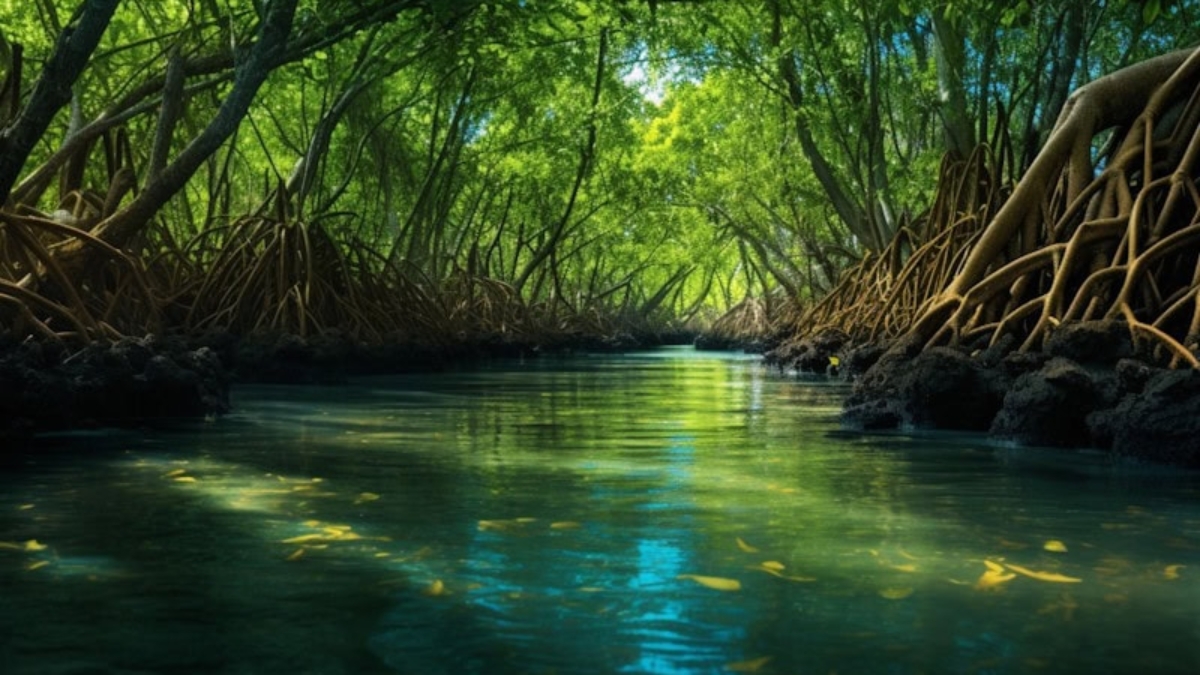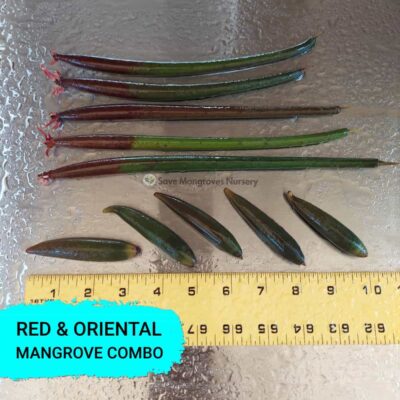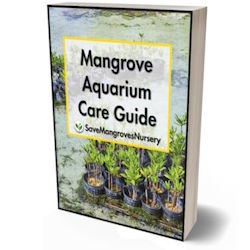Mangroves are well-known for their adaptability and resilience in some of the harshest environments on Earth, particularly in coastal and brackish waters. But what about freshwater? Can mangroves, particularly Red Mangroves, thrive in a freshwater aquarium setting? As an aquarium enthusiast, I’ve had my share of experiments with mangroves in different types of water, and the results are quite intriguing. In this post, we’ll explore whether mangroves can grow in freshwater, the conditions they need, and how you can successfully cultivate them in your aquarium.
What Makes Mangroves Unique?
Mangroves: The Coastal Survivors
Mangroves are unique trees and shrubs that have evolved to survive in environments where few other plants can thrive. They typically grow in coastal areas where the water is a mix of saltwater and freshwater, known as brackish water. Mangroves have special adaptations, such as salt-filtering roots and leaves that excrete salt, which allow them to live in these challenging conditions.
Good: ✅
- Mangroves can filter salt from water, making them incredibly resilient.
- They help prevent coastal erosion and provide a habitat for marine life.
Bad: ❌
- Mangroves are naturally slow-growing, so patience is required when cultivating them.
- They require specific conditions to thrive, which can be challenging to replicate in an aquarium.
Mangrove Fact: 🌟
Mangroves are often referred to as “walking trees” because their stilt-like roots appear to be walking on water. This adaptation allows them to thrive in waterlogged soils where other trees would not survive.
Can Mangroves Survive in Freshwater?
The Science Behind Mangroves and Freshwater
Mangroves are primarily found in brackish water environments, but they can survive in freshwater conditions as well. The key to their survival in freshwater lies in their ability to adapt to different salinity levels. In the wild, mangroves are often found in areas where freshwater rivers meet the ocean, creating a range of salinity levels that the plants must tolerate.
Good: ✅
- Mangroves can adapt to freshwater, making them versatile for different aquarium setups.
- In freshwater, they still provide excellent filtration, removing nitrates and other pollutants from the water.
Bad: ❌
- While mangroves can survive in freshwater, they may not thrive as they would in brackish or saltwater conditions.
- Growth may be slower in freshwater, and the plants may require additional nutrients to compensate for the lack of salt.
Personal Experience with Mangroves in Freshwater
When I first introduced mangroves to my freshwater tank, I was skeptical about how well they would do. After a few weeks, I noticed that while they were not growing as rapidly as in my saltwater setup, they were still healthy and developing new leaves. Over time, I found that adding some marine salt to the water helped boost their growth without fully converting the tank to brackish water.
Pros and Cons of Growing Mangroves in Freshwater
The Good and the Bad
Mangroves can be a stunning addition to a freshwater aquarium, but there are some pros and cons to consider:
Good: ✅
- Mangroves help improve water quality by absorbing nitrates and other harmful substances.
- They create a natural and aesthetically pleasing environment in your aquarium.
- Mangroves can serve as a unique habitat for fish and invertebrates.
Bad: ❌
- Growth may be slower in freshwater, requiring more patience from the aquarist.
- Mangroves in freshwater may require additional nutrients to thrive, which can complicate maintenance.
- The absence of salt can affect the health of the mangroves, potentially leading to stunted growth.
Mangrove Fact: 🌟
Mangroves play a crucial role in carbon sequestration, helping to mitigate the effects of climate change by absorbing large amounts of carbon dioxide from the atmosphere.
How to Successfully Grow Mangroves in Freshwater
Tips for Thriving Mangroves
If you’re considering adding mangroves to your freshwater aquarium, here are some tips to help them thrive:
- Light: Mangroves need plenty of light to grow. Full-spectrum LED lights that mimic natural sunlight are ideal. Ensure your mangroves receive at least 10-12 hours of light per day.
- Nutrients: In freshwater, mangroves may require additional nutrients, such as iron and potassium, to compensate for the lack of salt. You can add these through root tabs or liquid fertilizers.
- Water Quality: While mangroves can tolerate a range of water conditions, maintaining stable water quality is crucial. Regular water changes and monitoring of pH and hardness levels will help keep your mangroves healthy.
- Temperature: Mangroves prefer warm water, with an ideal temperature range between 70°F and 85°F. A heater may be necessary to maintain this temperature, especially in cooler climates.
Good: ✅
- Following these tips can help ensure your mangroves grow strong and healthy in freshwater.
- A stable environment encourages steady growth and the development of new leaves.
Bad: ❌
- Neglecting these factors can lead to poor growth and unhealthy mangroves.
- Over-fertilizing or providing too much light can cause issues, such as algae growth or nutrient imbalances.
Conclusion: Mangroves in Freshwater—A Rewarding Challenge
Growing mangroves in freshwater is certainly possible and can be a rewarding challenge for aquarium enthusiasts. While they may not grow as quickly or robustly as in brackish or saltwater, with the right care and attention, mangroves can thrive in a freshwater environment. They offer numerous benefits, such as improving water quality and providing a unique and natural look to your aquarium.
At Save Mangroves Nursery, we offer healthy Live Red Mangrove Plants that are ready to add to and naturally filter your Saltwater, Freshwater, or Brackish Aquarium tanks. We ship out to all 50 states daily, so no matter where you are, you can start your journey with mangroves today. Whether you’re a seasoned aquarist or just starting, adding mangroves to your tank is a unique and rewarding experience that brings both beauty and functionality to your aquatic environment.
Best seller products
-
18”-24” Red Mangroves With Roots & 2-4 Leaves
Price range: $34.99 through $87.99 -
10”-14” Red Mangroves With Roots & 2-4 Leaves
Price range: $19.99 through $47.99 -
28″ Red Mangrove Tree – Fully Mature Plant
Price range: $0.00 through $230.00 -
[RARE] Orange Oriental Mangroves Propagule Seeds
Price range: $19.99 through $79.99 -
30″ Red Mangrove Tree – Fully Mature Plant
Price range: $0.00 through $180.00 -
Red & Oriental Mangrove Combo Bundle
Price range: $29.99 through $44.99
 Cart is empty
Cart is empty 




![[RARE] Orange Oriental Mangroves Propagule Seeds](https://savemangroves.com/wp-content/uploads/2025/07/Oriental-Mangrove-Seeds-Save-Mangroves-Nursery-400x400.jpg)



Add a Comment
You must be logged in to post a comment